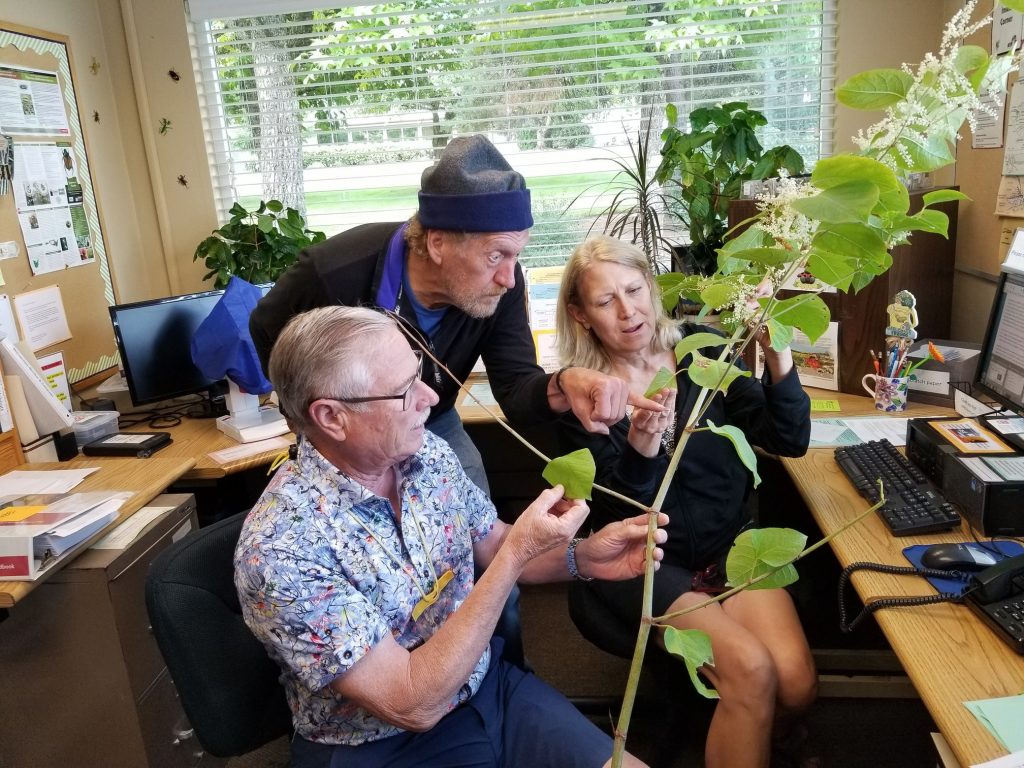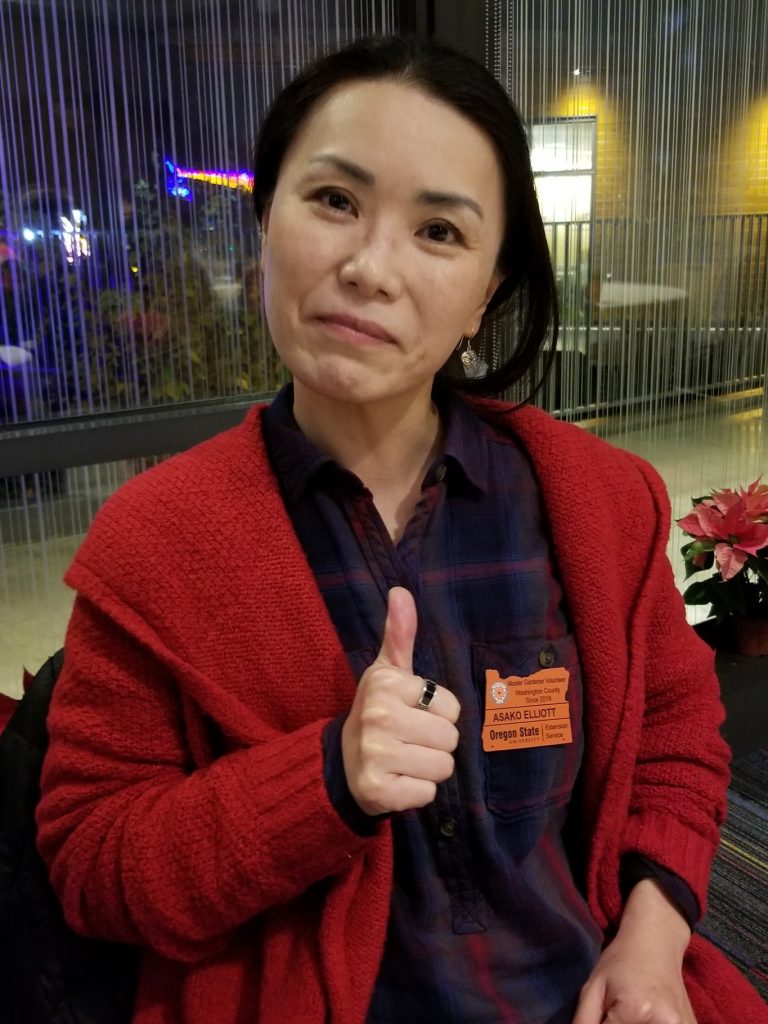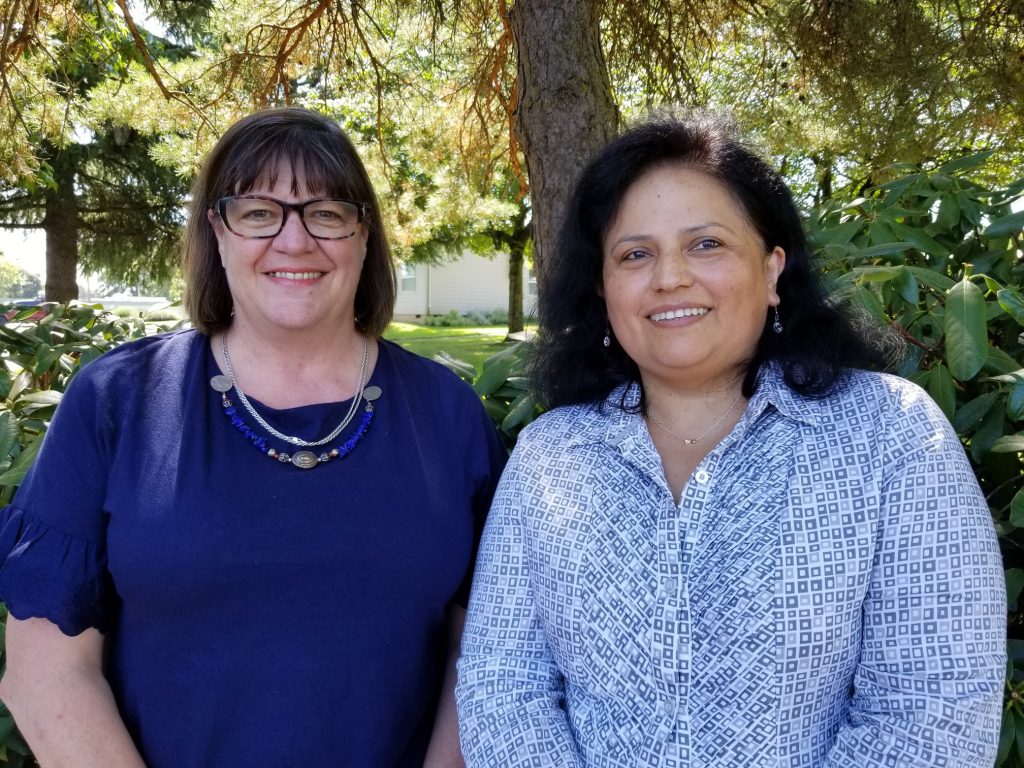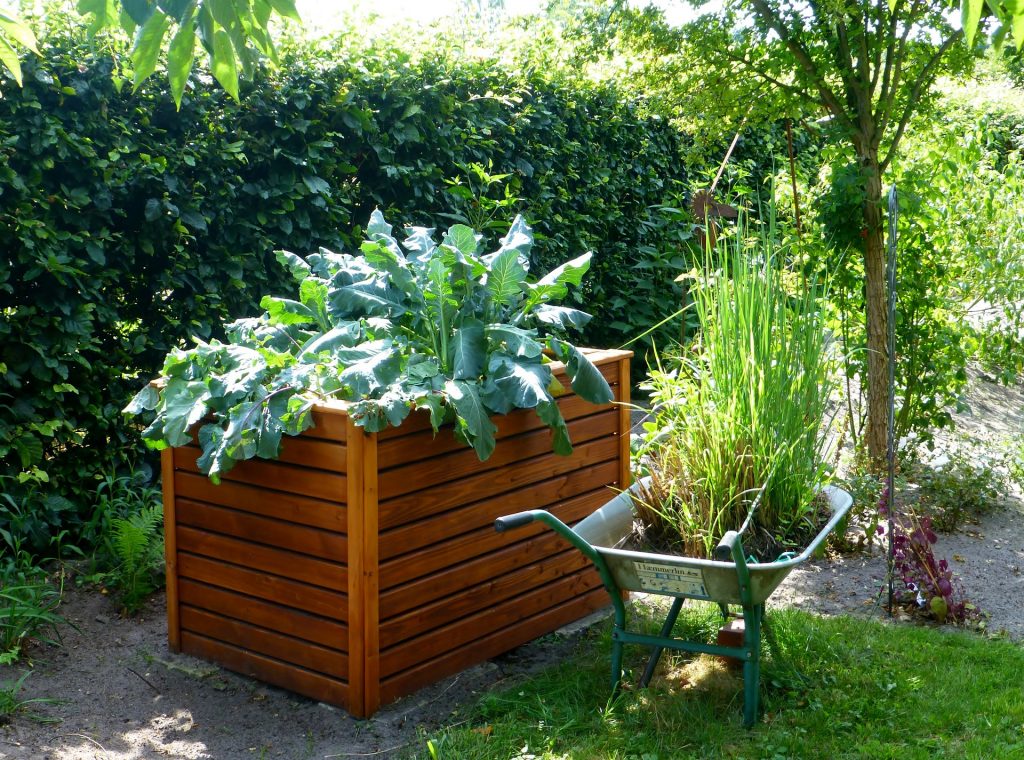
old pear tree
starlings announce
harvest time
– Philip Noble
Our Annual Harvest (of volunteer service hours that is!)
It is that time of year when we are busy harvesting in our gardens, whether herbs, fruit, vegetables, or flowers. For OSU Master Gardener volunteers, it is also time to gather and record your hours of volunteer service and submit your volunteer log sheet, prior to the October 1st deadline.
This year Metro-area Master Gardeners have made tremendous contributions educating and supporting home gardeners, and we want to share the news!
The October 1st deadline allows the metro MG program office enough time to compile and share your significant contributions, with the state Master Gardener program and OSU Extension Service.
Help us get those statistics to the state level by recording and submitting your hours this month! We will celebrate and share the grand totals at our Fall Recertification Training. See the article below for reporting details.
Online MG Volunteer Reporting System
We have an updated online volunteer reporting system to ease the process of submitting your volunteer hours and signed 2019-2020 Conditions of Volunteer Service form.
To report using the online system – follow the links sent to you in an email that was sent from Marcia McIntyre on September 5th.
The online system prompts you through several questions to record your volunteer hours, provides a special email in which to send your volunteer log sheet, plus the options to send your yearly Conditions of Volunteer Service via mail, email or DocuSign!
You still need to record your volunteer hours onto a Word, Excel or PDF form – but now you can upload those hours via the online system.
NOTE: You can refer to your CERVIS log to track your hours – but you also need to log all CERVIS hours on your volunteer log sheet. Most “Program” hours are recorded in CERVIS. “Partner” events and activities are not recorded in CERVIS (this includes Chapter events, plant sale support, Chapter demonstration/education garden volunteer service). Be sure to record all your volunteer hours and continuing education hours on your log sheet.
A special thank you to those who have already submitted your hours! Great going, early birds!
For those of you who are still seeking Recertification/continuing education or volunteer opportunities look for some great opportunities below.
How to Maintain Master Gardener Certification
Need a refresher on how to maintain your Master Gardener certification? Here you can find the details. Whether you are a 2019 trainee or a Perennial MG, to continue to serve as a “current” OSU Master Gardener you must submit an annual, signed Conditions of Volunteer Service form, which can be signed via DocuSign (see article above and email received from Marcia McIntyre on September 5th).
Fun fall Farmers Market volunteer opportunities, sign-up on CERVIS!

Fall is a wonderful time to volunteer at area Farmers Markets, as autumn produce lines the aisles and seasonal home gardening questions abound.
Opportunities to volunteer at a Farmers Market remain for Beaverton, Gresham, Hillsdale, Lake Oswego, Lents, and Tigard. Grab an open slot on CERVIS
Guide home gardeners through the fall and winter season!

As the days shorten and the temperatures cool, a new host of gardening conundrums perplex the home gardener. You can assist and expand your own knowledge, collaborating with other MGs as you research and advise gardeners. Sign-up on CERVIS or contact a phone coordinator.
- Clackamas County Phones, Catalina Santamaria, 503-655-8631 catalina.santamaria@oregonstate.edu
- Multnomah County Phones, Janet Hohman, 503-655-8631 janet.hohman@gmail.com
- Washington County Phones, Jenifer Halter, 503-821-1112 jenifer.halter@oregonstate.edu
Save the Date! Saturday, November 9th – FALL RECERTIFICATION!

Our annual Master Gardener Fall Recertification Training is scheduled for Saturday, November 9th, 8:00am to 3:45pm, at Clackamas Community College. This annual event is a daylong continuing education opportunity. Earn 6 hours of continuing education/recertification credit by attending.
Photo: Oregon State University
Please join us for an engaging day of training that will support you in your role as a garden educator.
‘A Diverse Garden is a Healthy Garden – Diversity, Equity, and Inclusion in your role as an OSU Master Gardener volunteer.’ Presenters: Yolando Sánchez, Jeff Selby, and Koffie Dessou of the City of Portland, Office of Equity and Human Rights
‘How trees grow and why they die!’ Presenter: Glenn Ahrens, OSU Extension Forester, Clackamas, Hood River, and Marion Counties
‘Is the Insect Apocalypse Upon Us?’ Presenter: Gail Langellotto, Statewide Coordinator, OSU Extension Master Gardener Program, Associate Professor of Horticulture, OSU
*Attendance and participation at the November 9th, Fall Recertification Training counts as 6 hours continuing education credit for the 2019-2020 Master Gardener Volunteer Season. Record your attendance on your 2020 Volunteer Log.
2019 Master Gardener Trainees to Receive OSU MG Badges

Our November 9th, Fall Recertification Training (see details above) also gives us the opportunity to congratulate the new class of Master Gardener interns as they step-up to Perennial Master Gardener status, after completing their volunteer requirements.
2019 Interns are cordially invited to attend the full day of Fall Recertification training, which will count toward your continuing education hour requirement for 2020. If you are unable to attend Fall Recertification to receive your badge, it will be mail to those not present in December.
Welcome Leah and Catalina!

We want to introduce you to two new faces at the Clackamas County Extension Office (where our MG program team is located).
Photo: Leah (left) and Catalina (right).
Leah Sundquist is the new Clackamas Co. Extension Office Manager. Leah joins the Extension team after a 35-year career in the U.S. Army, where her final years of service included roles as the Chief of Staff and Director of Plans and Operations for the Oregon National Guard in Salem. When asked about her experience with gardening, Leah shares that she is proud to be nurturing her office ‘welcome gift’ jade plant, the past 3 and a half months, with the plant showing nary a sign of distress. She is nurturing an olive tree with hopes that, if it survives, she can reward herself by purchasing another one!
Catalina Santamaria joined our Extension team in July, as Office Specialist in the front office. A portion of Catalina’s time will be supporting the Master Gardener and 4-H program. We are excited that Catalina is joining our MG team. Catalina will be coordinating the Clackamas County MG office helpline and working alongside the MG team. Catalina shares that her exposure to gardening started as a young child, as her father grew many plants at home. She recalls many cyclamen and African violets brightening her childhood home.
Please join us in extending a warm, Master Gardener welcome to both Leah and Catalina!
September Master Gardener Advanced Training Webinars
Here comes another great Master Gardener Advanced Training Webinar, offered on Tuesday, September 17th, 11am.

Are Viruses Lurking in Your Backyard Cherries?
Presented by Lauri Lutes (OSU Botany and Plant Pathology PhD student)
Register here: https://learn.extension.org/events/3690
Join Lauri Lutes, PhD Candidate in OSU’s Department of Botany and Plant Pathology, as she shares what she has learned studying viruses and diseases to which cherries are susceptible in Oregon. Lauri will share disease prevention and management for cherries in your home garden. She will also cover how to choose the best tree, common virus symptom identification, and virus vector (insect and nematode) management.
If you are unable to watch the webinar live, check back in a couple of days at the 2019 Advanced Training Webinar page, where a recording of the webinar will be posted.
More Advanced Training Webinars
The OSU Advanced Training Webinars are a great way to stay up-to-date on the latest in horticultural science. This series features University experts who offer a wealth of research-based information on home gardening topics, which support you in your role as a garden educator. Check out the great library of webinar recordings.
2019 Advanced Training Webinars
2018 Advanced Training Webinars
2017 Advanced Training Webinars
*MG Advanced Training Webinars count as 1-hour continuing education credit. You may count any webinar, from any year, that you watch for the first time. List any Advanced Training Webinars that you view on your Volunteer Log Sheet.
Create Gardens Accessible to All!

‘Gardening is one of the more therapeutic things a person can do – emotionally, mentally and physically – but for some it seems out of reach. Good design and the practices can make a gardening accessible for everyone.’
Fellow Metro-area, OSU Master Gardener, Corinne Thomas-Kersting, shares some great recommendations for universal garden design in this article ‘Create Gardens Accessible to All’, by OSU Extension Communications Specialist Kym Pokorny.
Gardening Tips for Fall
For your viewing pleasure, we will reprise two great videos with tips for timely gardening activities.





